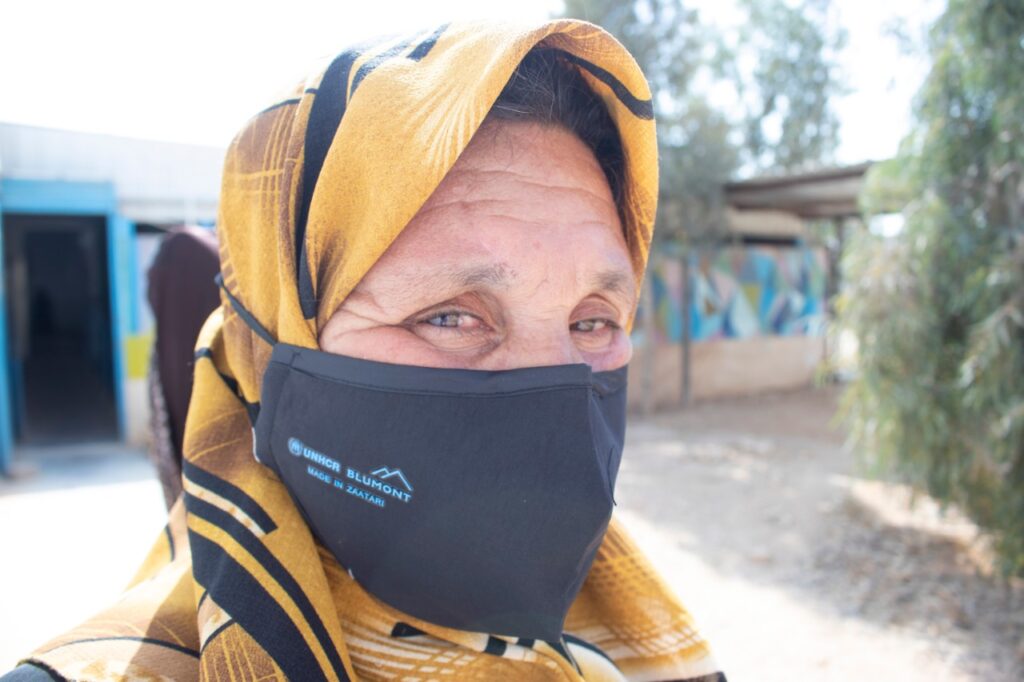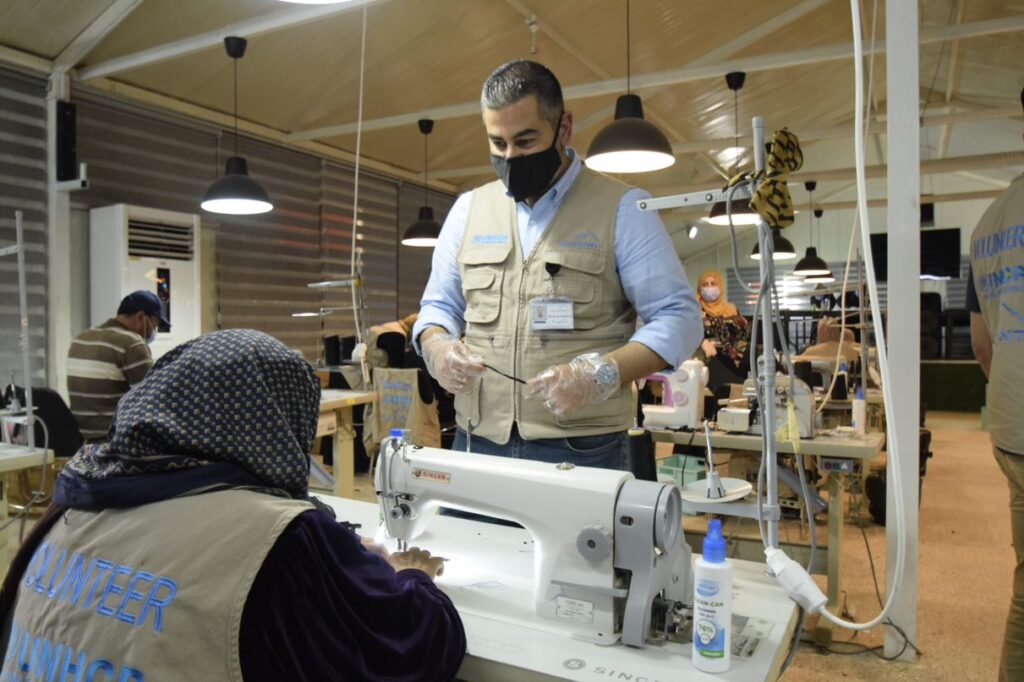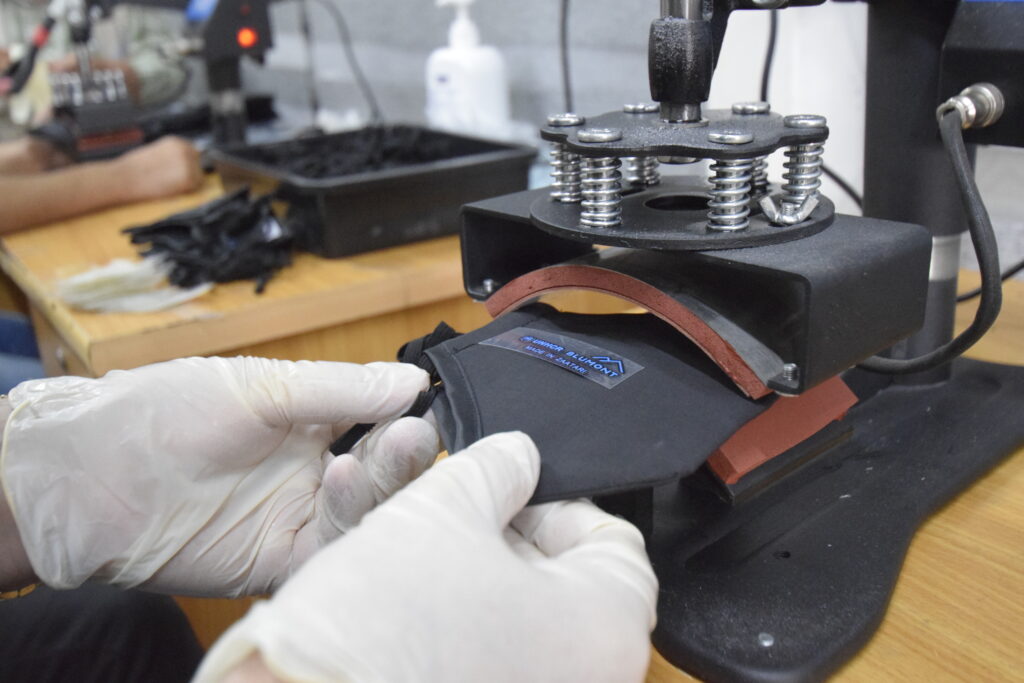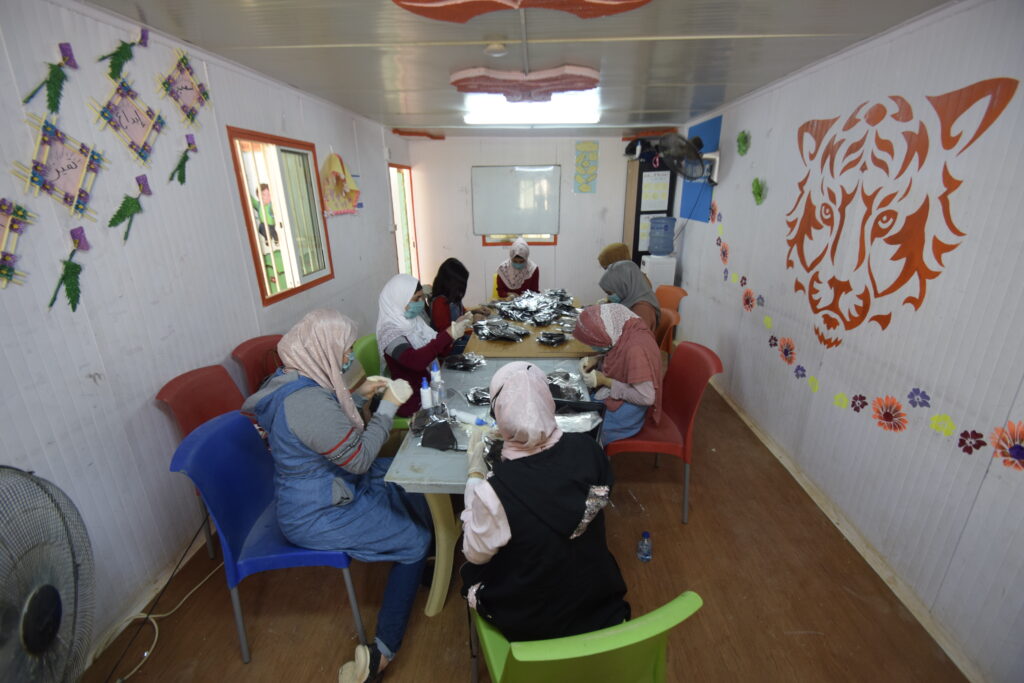Amidst the COVID-19 pandemic, the Blumont team at Za’atari Camp worked with UNHCR and residents to leverage skills and resources to keep everyone safe.
As activities at Za’atari Camp in Jordan were adapted in line with local guidance, a creative approach was developed to engage the community in protecting the camp’s 78,000 residents from coronavirus. Starting with an idea from the camp’s Women’s Committee, the Za’atari Mask House came together to produce protective face masks.
The entire process—from mask design to production and distribution—involved the community.
Camp residents, including those working at the camp’s UNHCR-funded Innovation Lab, developed face mask prototypes to ensure that masks met protection standards. After rounds of trial and revision, the team’s design received approval from the Ministry of Health and the Royal Scientific Society—the first such effort to receive approval in Jordan.

An elderly camp resident wears a mask from the Mask House to stay protected
With a pattern in place, a community gathering space was transformed into a socially-distant production center. Sewing machines used in vocational training were moved in and an assembly line was established to institute a safe and efficient three-part process for tailors—cutting fabric, ensuring masks meet the standards, and sewing the edges.
More than 80 women living at the camp were hired to create the masks. Most had honed their skills through Blumont-run vocational courses.
“We as refugees want to leave our fingerprint on the community and help protect from coronavirus,” said Rania. “I can do that by making masks.”
“It is the best project in the world,” Ena’am said. “I learned to make masks and I have been able to earn money to pay off debts.”

Blumont-trained tailors hard at work sewing masks
A daycare was opened to support the tailors working in the mask house. As their mothers sewed, children played and learned safe hygiene practices, including lessons on handwashing.
“The children enjoy the time here to the point that, when the mother completes her working day, the kids refuse to leave,” one caretaker said.
Before masks leave the Mask House for distribution, they are sanitized in another invention created at the Innovation Lab. Using bicycle wheels, water pipes, a nylon tarp, and other materials found at the camp, the team built a machine to efficiently steam and sterilize masks for packaging.
“As refugees, we tried to prove that we had our own ideas and are able to help ourselves and the outside community,” Mohammad explained.
After being packaged with help from girls who are part of the These Inspiring Girls Enjoy Reading (TIGER) program, masks were distributed to camp residents—starting with those most vulnerable to COVID infection. The TIGER girls also helped with creating COVID awareness posters that were hung in visible places around the camp, encouraging mask use and good hygiene practices.

A mask in its final stages of production before getting steamed for sterilization

TIGER girls package the masks for distribution
Since the Mask House began production, tailors have produced more than 73,000 masks—sometimes at a rate of up to 200 masks per hour!
“It is light and good for breathing,” said Yousef. “This is the best mask I have worn since the beginning of the pandemic!”
***
READ MORE
Team Perspective: Living and working at Za’atari Camp
Looking to the Future, with the eye of a TIGER
Robots for Change: Youth Use New Skills in Innovative Ways
Awareness Campaign Protects Displaced People Against COVID-19



